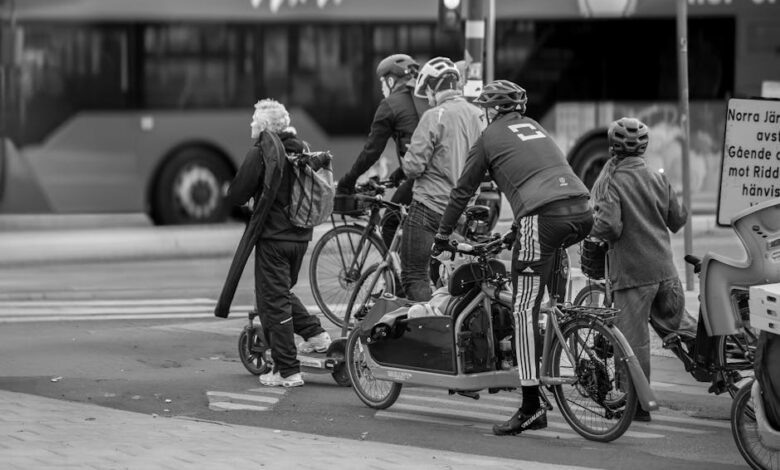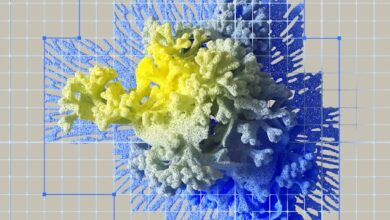The Road Ahead: How AI Smart Glasses Are Reshaping Delivery Routes

In an age where every second counts, especially when it comes to getting that eagerly awaited package to your doorstep, the relentless pursuit of efficiency is more than just a business strategy—it’s an expectation. We’ve all been there: tracking a package, counting down the minutes, perhaps even peeking out the window. Now, imagine a world where the delivery process itself is seamlessly optimized, not just by algorithms running in the background, but by an intelligent assistant right in the driver’s line of sight. Amazon, a company synonymous with pushing the boundaries of logistics, is doing just that, rolling out a groundbreaking innovation: AI-powered smart glasses for its delivery drivers.
This isn’t merely a futuristic concept; it’s a tangible step forward that promises to redefine the “last mile” of delivery. Gone are the days of constant glances at a mounted GPS or fumbling through route sheets. With these new augmented reality (AR) glasses, Amazon isn’t just offering a new gadget; they’re embedding artificial intelligence directly into the operational workflow, aiming to shave valuable time off each delivery while enhancing precision and safety. But what does this really mean for the drivers, the customers, and the broader logistics landscape?
The Road Ahead: How AI Smart Glasses Are Reshaping Delivery Routes
At its core, Amazon’s new AI smart glasses are designed to be an extension of the driver’s own senses, offering real-time, context-aware information without requiring them to divert their attention from the road. Think of it: detailed turn-by-turn directions, not on a separate screen, but overlaid directly onto the driver’s view of the actual street. This isn’t just about showing a blue line on a map; it’s about intelligent wayfinding that adapts to live conditions.
The potential for efficiency gains here is staggering. Anyone who’s ever navigated an unfamiliar neighborhood knows how easy it is to miss a subtle turn or misinterpret a complex intersection. These smart glasses aim to eliminate those moments of hesitation. By providing crucial information about upcoming turns, specific addresses, and even optimal parking spots directly in the field of vision, drivers can maintain focus, reduce errors, and ultimately complete their routes faster and more smoothly.
Beyond Directions: Hazard Alerts and Package Precision
But the capabilities extend far beyond simple navigation. One of the most compelling features of these AI smart glasses is their ability to alert drivers to potential hazards. Imagine driving down a residential street and, just as you approach a sharp bend, a visual cue or subtle audio prompt warns you about a patch of black ice or an unexpected obstruction. This real-time hazard detection, powered by integrated artificial intelligence analyzing environmental data, could significantly enhance driver safety and reduce accidents.
Moreover, the glasses can provide information about specific packages, ensuring the right item gets to the right door with unparalleled accuracy. No more searching through stacks of boxes or double-checking delivery manifests. The AI can highlight which package is next, confirm details, and even guide the driver to the precise delivery location on a property, like “leave package by the red door, behind the potted plant.” This level of precision minimizes misdeliveries and boosts customer satisfaction, while streamlining the driver’s workflow.
From GPS Glance to Immersive Guidance: The Driver’s Evolved Experience
For years, the experience of a delivery driver has been a delicate dance between managing physical packages, navigating complex routes, and adhering to tight schedules. Tools like GPS devices have certainly helped, but they often require drivers to constantly shift their gaze, potentially creating distractions. Amazon’s AI smart glasses offer a paradigm shift: they integrate information directly into the environment, allowing drivers to stay immersed in their primary task – safe driving and efficient delivery.
This integration isn’t just about speed; it’s about reducing cognitive load. By presenting information intuitively, the glasses free up mental bandwidth. Drivers can concentrate more fully on their surroundings, anticipate potential issues, and interact more smoothly with customers. This could lead to a less stressful work environment, which, in an demanding role like package delivery, is a significant benefit. A calmer, more focused driver is not only a safer driver but also a more effective one.
Augmenting, Not Replacing: The Human-AI Partnership
It’s crucial to understand that these smart glasses aren’t designed to replace the human element but to augment it. The AI acts as a sophisticated co-pilot, providing critical information and support, allowing the human driver to make better, faster decisions. The nuanced judgment required for navigating unpredictable situations, interacting with customers, or adapting to unforeseen circumstances still rests firmly with the driver.
This partnership between human intelligence and artificial intelligence is a hallmark of truly effective innovation. The glasses process vast amounts of data—from mapping information and traffic updates to package details and even past delivery patterns—and distill it into actionable, on-demand insights. This isn’t just automation; it’s intelligent assistance, transforming the driver into a super-efficient, super-informed delivery professional.
The Ripple Effect: Broader Implications for Logistics and Beyond
Amazon’s venture into AI smart glasses for delivery drivers isn’t just a fascinating technological development; it has far-reaching implications for the entire logistics industry and perhaps even other sectors reliant on mobile field operations. If successful, this technology could set a new standard for operational efficiency, prompting competitors to explore similar augmented reality solutions for their own fleets.
Consider the potential for data collection and analysis. As these glasses are used, they’ll generate an unprecedented amount of real-world data about routes, delivery challenges, and environmental conditions. This data can then feed back into the AI systems, making them even smarter, more predictive, and more accurate over time. It’s a continuous feedback loop that drives relentless improvement, optimizing not just individual deliveries but entire network operations.
Ethical Considerations and the Future of Work
Of course, with any powerful new technology, there are always ethical considerations. Questions around driver privacy, data security, and the potential for increased surveillance will naturally arise. It’s imperative that companies deploying such tools prioritize transparency, consent, and responsible data governance. Finding the right balance between operational efficiency and protecting individual privacy will be a critical challenge that needs careful consideration.
Furthermore, this advancement sparks conversations about the evolving nature of work. Will such AI tools lead to job displacement, or will they create new roles and opportunities, transforming existing ones? The prevailing view from this kind of innovation suggests augmentation, where human workers are empowered with better tools to perform their jobs more effectively, rather than being entirely superseded. The role of a delivery driver might shift, becoming less about rote navigation and more about problem-solving and customer interaction, with the AI handling the heavy lifting of real-time data processing.
Navigating the Future: A Smarter Path Forward
Amazon’s introduction of AI smart glasses for its delivery drivers marks a significant milestone in the convergence of artificial intelligence, augmented reality, and practical logistics. It’s a bold step that underscores the company’s commitment to innovation and its relentless pursuit of operational excellence. While the initial rollout will focus on efficiency and safety in the “last mile,” the broader implications for how we understand and execute physical delivery—and indeed, how we blend human effort with intelligent technology—are profound.
This technology holds the promise of making deliveries faster, safer, and more precise, benefiting everyone from the driver on the road to the customer eagerly awaiting their package. As these smart glasses become more integrated into the daily fabric of delivery, they won’t just be a tool; they’ll be a testament to how intelligent design can create a smoother, smarter path forward for us all. The future of delivery isn’t just coming; it’s being seen, quite literally, through new eyes.





